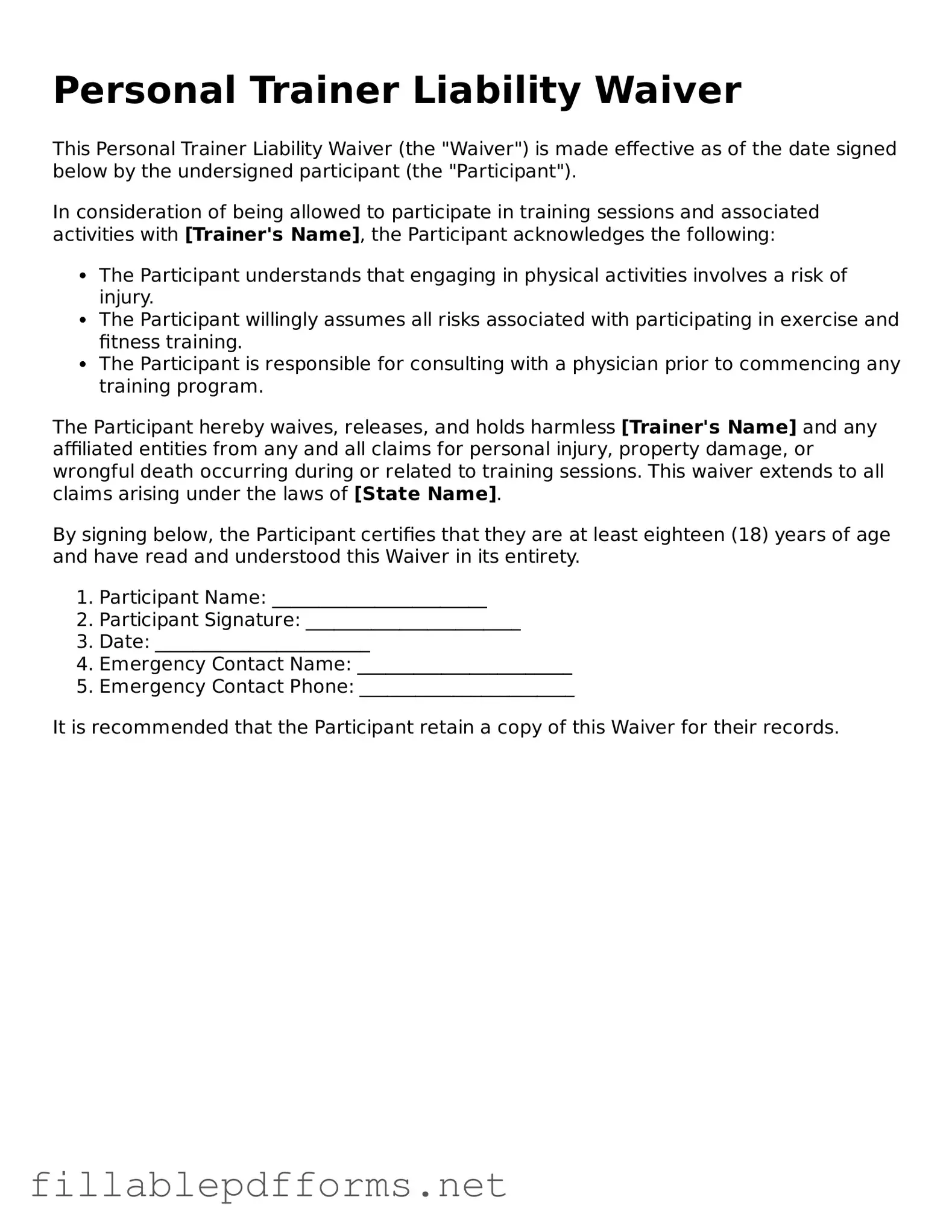The Personal Trainer Liability Waiver form serves as a crucial document in the fitness industry, designed to protect personal trainers from legal claims arising from injuries sustained by clients during training sessions. This form typically outlines the inherent risks associated with physical exercise, emphasizing that clients acknowledge and accept these risks. It also clarifies the responsibilities of both the trainer and the client, ensuring that the client understands the importance of following instructions and communicating any medical conditions that may affect their ability to engage in physical activity. Furthermore, the waiver often includes a section where clients agree to release the trainer from liability for any injuries, whether they result from negligence or otherwise. By signing this document, clients affirm their understanding of the risks involved and their voluntary participation in training programs. This legal instrument not only fosters a safer training environment but also establishes a clear framework for accountability, which is essential in the dynamic and sometimes unpredictable realm of personal fitness training.
